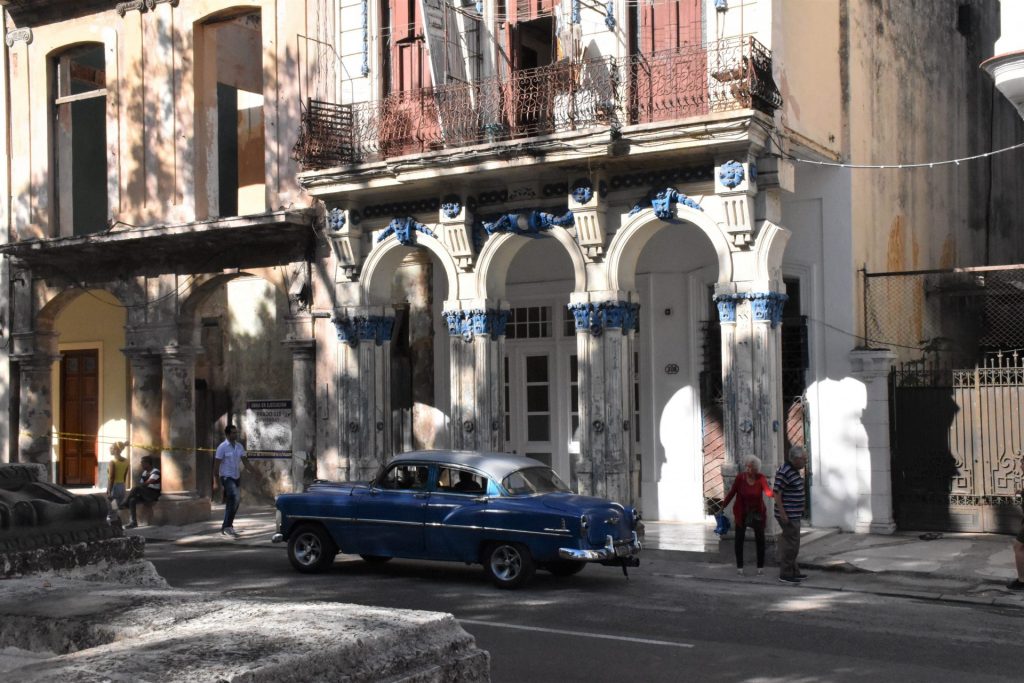Cuba, we cannot stop thinking about you. <3
There is no doubt Cuba is an awesome destination to travel to. It was on my list for about 10 years before we finally managed to get there in February, before the quarantine, when travelling was still simple.
It is an interesting destination for various reasons. Some of you might want to go there due to its history, others would be impressed by its mix of different cultures or music and dancing which can be found almost anywhere. Then again, its climate is pleasant almost all year round and who doesn’t love that, right? Let’s not forget about Cuban nature, different currencies and the fact that it is kind of stuck in a different era. Walking around Havana is like stepping into an old movie.
But its best features are not sandy beaches or green hills. What is it then, you might ask? The answer is Cuban people. They are warm, friendly, hospitable, welcoming, beautiful, musical, artsy and even saying that doesn’t do them justice. They are able to make something out of nothing and are extremely resourceful and educated people. They cherish what they have and enjoy life in ways that we already forgot exist. By dancing to a salsa song in the middle of the street, singing when you feel like it or simply by sitting down with friends and family and having a bottle of rum, just because you can.
Cuba is additionally an extremely safe country and it is really easy to travel around (or it was before COVID). How you might ask? Here are some basic things to make your trip easier once you are able to go.

Language
A bit of Spanish goes a long way. Learn it and you will get a completely different experience in Cuba. You can, of course, also get by with English and by waving your hands. 🙂
Money
Shortly – Cuba has two currencies and prices are in both. Cuban Peso Nacional (CUP) and the Cuban convertible Peso (CUC). CUP is used primarily by locals and is typically valued like this: 25 CUP for 1 USD. There are things you can pay in the CUP as a tourist too. CUC is used in the tourism industry and is valued like this: 1 CUC = 1 USD. You can exchange your cash at the airport as soon as you arrive.
Be sure to have some extra money, since your credit cards might not work in Cuba (like ours didn’t). Many touristic places only accept CUC, but you might also sometimes get your change back in CUP.
You can exchange money at the airport, Cadecas (exchange offices) around the cities in Cuba or at the bank. You need your passport if you want to exchange money. You cannot exchange Cuban money outside Cuba (not even at the airport once you cross the border control going back home), so do it before you leave the country or spend it all during your trip.
Accommodation
We mostly slept in Casas particulares, which is also the best way to meet and talk to locals and thus the best way to really get to know the Cuban culture. We booked them through Airbnb and in one case our Casa particular owners arranged a stay at their friend’s casa in another town when we didn’t manage to book anything. Booking is really not necessary, because there are a lot of Casas, almost everywhere that is remotely touristic.
But, if you have special requirements and wishes, book ahead. Most casas have a breakfast option which you have to pay for additionally, but it is worth it. They can also arrange activities for you if you wish and are a great pool of local knowledge and tips. Again, Spanish comes in handy if you want to interact on a deeper level.

Transport
Transport is by far the most expensive thing you have to count on as a tourist. There are a few ways you can travel around Cuba.
A bus – Viazul which is a bit cheaper than its more expensive and fancier alternative Transtur. They are both pretty touristic. We made a few reservations for Viazul online directly from Cuba, but you can also do it at the Viazul offices which are usually at bus stops.
If you make a reservation online, be sure to go to the Viazul office at least 1h before your scheduled departure. Re-check the bus schedule and check-in. But, if you are waiting to buy a ticket at the last-minute there might be none. Keep that in mind. We travelled without a set schedule, so we could make last-minute decisions without problems. You can book Transtur at Cubanacan agencies or at the hotels. The bus is also the cheapest way to travel between cities.
The next option is to use a taxi collective. They can help you arrange a taxi in your casa particular or a hotel if you are staying in one. Taxi collective is not cheap, but in some cases, it makes your journey from one point to another much easier than the bus, since there are towns which are not very well connected and there might be only one bus per day going there.
There are lots of places that are only connected to and through Havana. That doesn’t mean that if you take a taxi collective, that you will not need to switch taxies near Havana too though. If you are travelling a long distance that is a realistic option, so don’t be surprised. The price of taxi collectivo from the airport to Havana city is 25 CUC per car.
As far as the transport in the cities goes, you can use bikes, which you can rent in some places (but not everywhere, since bikes are not in abundance in Cuba – especially not in small towns), carriages, and all sorts of bicitaxis, motor-taxi things. Ask in your casa particular about prices if you don’t want to overpay too much.
In Havana, you can also use a couple of different types of taxies. There is really not difficult to get one since they are everywhere, just be sure you pick the correct one.
The first option is taxi collectivo, which you have to stop by the road. They have set routes and you have to know where to get in if you want to travel to the correct destination. Getting it and traveling with it is an adventure, but it is really cheap. You pay it in CUP or you get change back in CUP.
The second option is taxi regular which mostly works the same way as taxi collectivo. You have to stop it by the side of the road. But, you also have to negotiate the price if you don’t want to overpay. Basically, halve the offered price and you are good to go. This should still be a cheap option.
Private taxies (the yellow ones) and old American cars (the classic taxies) are much more expensive. We didn’t use them. We also didn’t use Coco taxies – the egg-shaped ones. But from what we read online they are a tourist rip-off.
We didn’t try using trains.

Internet
Internet as we know it is non-existent in Cuba. Internet in Cuba works on 1h ECTECSA cards, which you buy and use at Wi-Fi hotspots around the country. The Internet is not free and it is restricted and censored by the government. Most houses do not have internet. Those that do, have routers you can use but don’t expect high speeds. It is best to just log-off if you don’t have an emergency which would require you to be online. That is why it is sometimes frustrating to book things from inside Cuba. Viazul and Airbnb work fine (but slow) though, as long as you find a hotspot. Don’t expect Booking to work.
Shops
Don’t expect to find shops and supermarkets as you know them. If you need tampons, insect repellent, sunscreen or something like that, bring it with you. The same goes for pharmaceutical products. If you want to bring something to Cuba as a gift, there is a lack of pens, children literature, toys, hair scrunchies, reading glasses or contacts. Those are not things you can easily get in Cuba. You can find more about what to bring online. It is completely possible you’ll walk into a Cuban store and find empty shelves, so be ready for that. Water is available in local mini-markets/kiosks or whatever you want to call them.
What to wear?
Cubans are really relaxed in their clothing style, their language use and everything else. Everything in Cuba runs on the principle of live and let live. You can wear normal summer clothing. Be sure to have good walking shoes and something to wear for colder days, which can happen. Most Cubans wear jeans and sneakers to go out. There is definitely no need for high heels in case you were wondering.
That’s the basics of travelling to Cuba.
Cuba is amazing and we’re definitely going back.


[…] – sorry Šobec fans). We were one of the really lucky ones since we were able to go to Cuba in February. Winter holidays rock. There’s nothing like spending warm February days with a […]